
Purchasing antique jewelry means buying something truly special. Each necklace, watch, earring, and brooch has a long history behind it that makes the piece unique, even if it was just one among hundreds when it was new. Learning to recognize and appreciate quality antique jewelry comes with time and practice, but we’ll begin with some basic knowledge to get you started.
First off, let’s clear the air about something. The terms “antique” and “vintage” are not one and the same. “Antique” has a legally defined meaning, whereas “vintage” does not. While both terms are often thrown around imprudently, the US Customs Agency defines an antique as something that is at least 100 years old and less than 50 percent restored. The term “vintage” merely describes an item that was popular in another era, though some trade specialists apply a 50- to 100-year age bracket to the term.
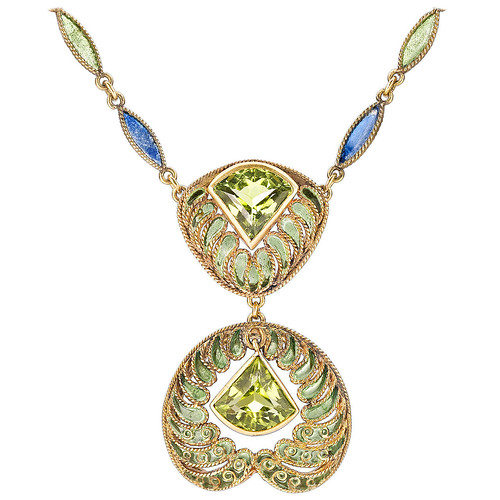
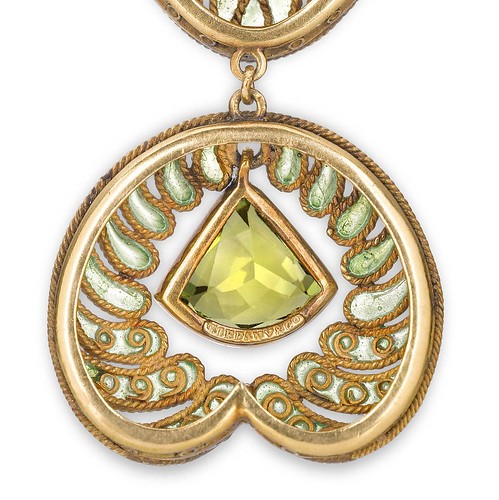
What to Look For:
Every antique belongs to an era, and you might discover that you prefer one over the other. Learn the styles and distinctions of the Georgian (1790-1831), Victorian (1837-1901), Edwardian (1901-1915), and other eras famous for their distinct styles of jewelry. Many of these eras contain smaller periods when specific themes gained popularity.
Familiarize yourself with the designs, materials, and manufacturing techniques of the desired era and period. Victorian Romantic period jewelry typically features animals, flowers, and other nature-related themes, while the Grand Victorian era was known for large, dark gemstones, silver, and engravings of the Queen, for example.
If you must inspect an antique engagement ring yourself, invest in a loupe. A loupe is a small magnifying glass used by jewelers and watchmakers. Look for workshops in your town or even online to train your eye on what to look for and how to use it. Be sure to check the piece’s condition. Search for rust and discoloration, solder where the piece might have been broken and put back together, and other forms of wear and tear.
Where to Buy:
You can purchase antique jewelry from several types of merchants, but your knowledge and skill in recognizing fakes and appraising genuine pieces will largely govern where you should shop. We’ll list a few types of outlets here from the lowest to highest degree of knowledge required.
Professional jewelers and consignment stores: Brick and mortar stores with professional staff and reputations to lose are the safest bet for buying antique jewelry if you don’t have time to invest in learning the ins and outs of the trade yourself. Experts can make recommendations, and you can see each piece in person.
Online retailers and professional marketplaces: The best deals can often be found online from reputable ecommerce outlets. While you don’t get a hands-on look at each piece, these e-stores usually include multiple photos, detailed descriptions, and sometimes even live support staff to answer any questions you might have. 1stdibs is an excellent option for online antique jewelry shoppers.
Online from reputable merchants: Online consumer-to-consumer marketplaces like eBay can offer great deals on antique jewelry, but make sure to thoroughly check the merchant’s rating, customer reviews, and return policy. Compare prices at multiple vendors, and always remember: if a deal looks too good to be true, it probably is.
Estate sales and auctions: At this point, you’re pretty much on your own for verifying and appraising a piece of jewelry. Bring your loupe and be ready to do some research. Don’t count on the merchant to be knowledgeable or honest about what they are selling.
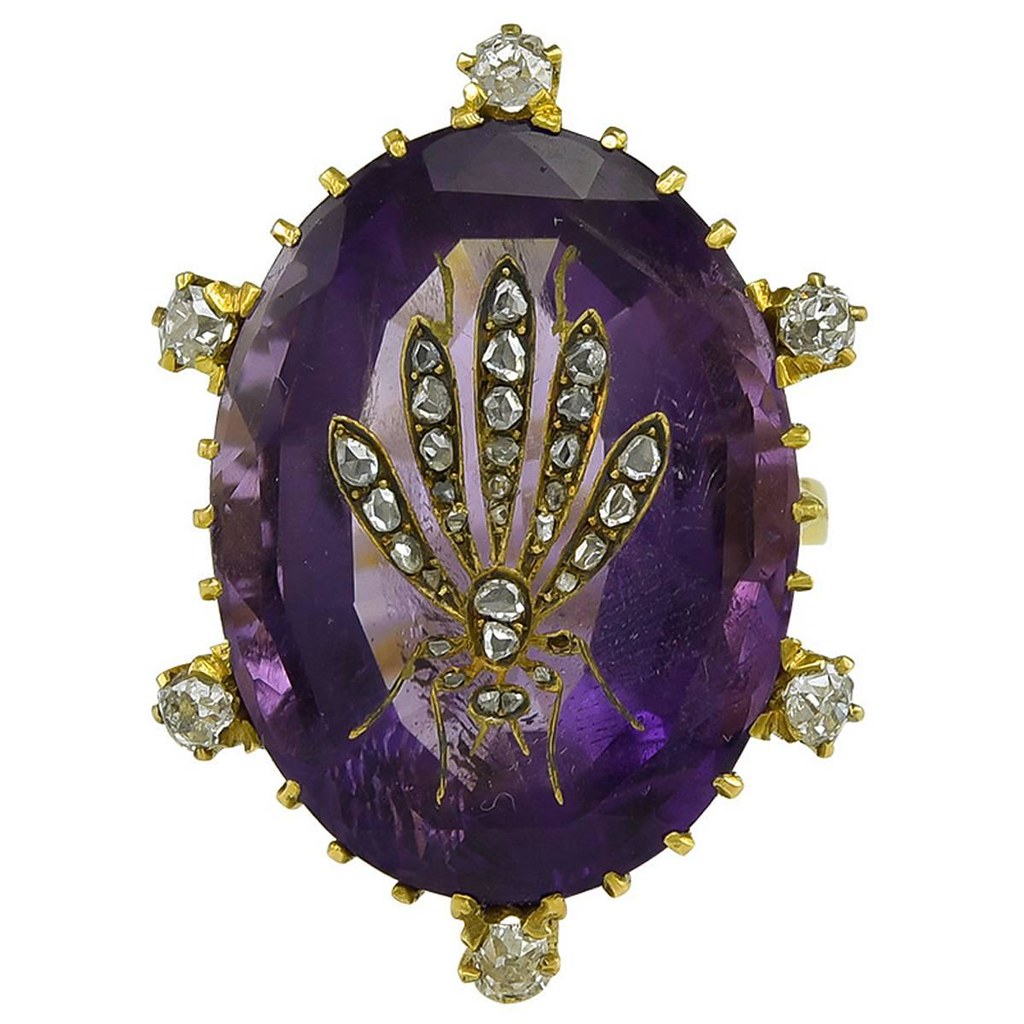
Cleaning & Care:
Now that you’ve bought your antique bracelet, spend some time keeping it in good condition. Store jewelry in a soft-lined container at a moderate temperature with multiple compartments. Apply beauty products like makeup and hairspray prior to putting on your jewelry, as the chemicals in these products can cause harm. Don’t wear your jewelry when bathing, exercising, or cleaning, as chemicals and sweat can cause corrosion and discoloration.
If you notice a stone is loose or some other malfunction, take the piece to a jeweler who is experienced in handling antiques. Don’t use ultrasonic cleaners and beware of dip cleaners that can eat away at enamel and other coatings. Jewelry polishing cloths are a good all-around solution. It’s always better to under-clean than to over-clean.
Every type of metal, coating, and stone have different cleaning and storage requirements, so invest some time researching what’s best for your piece. Sterling silver should be stored somewhere airtight, for example, while pieces containing pearls should be stored somewhere breathable.
This is a guest post written by the team at 1stdibs exclusively for Gem Gossip.


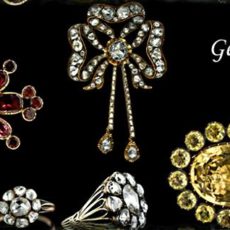
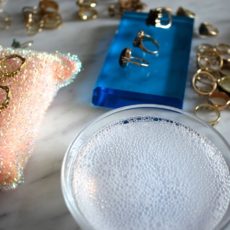
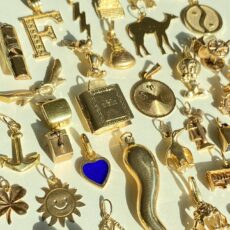
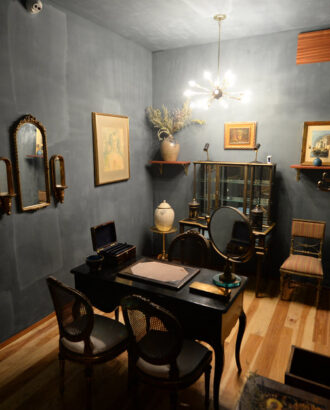

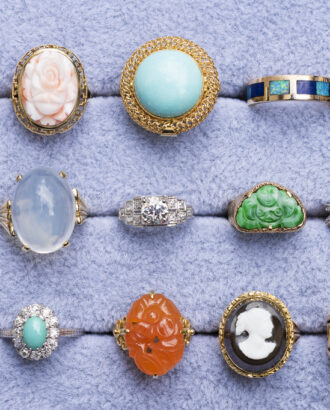
Akshay May 9, 2016 at 10:00 am:
Very informative tips on jewelry! Thanks for the post.
Lauren May 12, 2016 at 6:57 pm:
Thank you for this! As someone new to antique pieces, one of my concerns to to care for the item once I have invested in it.
Simon Brooks June 8, 2016 at 2:57 am:
Thanks for the great advice, especially about how to properly care for this kind of jewelry; after all, if you've spent so much on it, you want to make sure it will last. I actually didn't know that sweat can actually damage antique jewelry or that it shouldn't be worn when bathing or working out. My wife has actually wanted to try buying some of antique jewelry for a while now, so I'll definitely have to pass on your advice, especially about only letting experienced jewelers do any repairs.
judy wilson June 23, 2016 at 8:41 pm:
I want to start buying antique jewelry, so knowing these different eras I should be looking at will help me find some valuable pieces. I've always been fascinated with Victorian jewelry, so I need to start becoming more familiar with the designs, materials, and manufacturing techniques that are used to make them. That will help me know if a piece of jewelry is authentic. Thanks for the tips!
Kendall Everett July 21, 2016 at 5:45 pm:
Learning the different styles that belong to each era is a good way to decide which piece to go with. If you know you prefer a specific style, it will help to know which era it belongs to when you are searching for it. Calling each jeweller and asking if they carry the era you are looking for would save travel time.
Laurie August 1, 2016 at 9:22 pm:
Great tips for cleaning and care – pieces are delicate, and you want to ensure that you treat them well. Thank you for sharing!
Jack Mulligan September 22, 2016 at 4:50 pm:
I enjoy going to live auctions for the experience, and sometimes to buy. I haven't been to a jewelry auction, but it looks like it would be very interesting. I want to go because it would be a great opportunity to see beautiful and unique pieces of jewelry, and maybe even buy some.
Priya October 23, 2016 at 7:35 am:
Lovely designs!
Georgia B November 8, 2016 at 7:29 pm:
I love your tip on doing research on the era you're looking for ahead of time. I wouldn't have thought to think ahead like that! I want to invest in some antique pieces because I love the class and history behind them. I'll definitely have to do a little studying beforehand to make sure I know what I'm looking for when I finally go!
Braden Bills February 17, 2017 at 3:09 pm:
I want to attend a jewelry auction. It makes sense that I would want to know the difference between antique and vintage! That would definitely change the value of certain things.
Peter J. Brusaschi March 23, 2017 at 6:35 pm:
Great article, couldnt agree more with these bits – thanks so much for sharing! 🙂